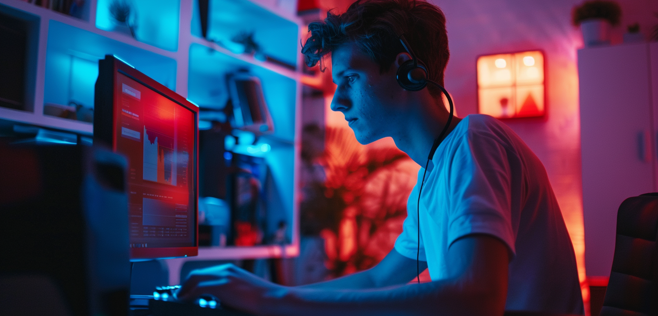Published 16 Aug 2025
AI Signals vs. Telegram Channels — Which Is More Reliable?

The world of cryptocurrency trading attracts many beginners with the promise of high profits, but it can also feel complex and unpredictable. New traders often experience information overload: markets are volatile, news flows non-stop, and successful trading requires knowledge and experience. In this environment, trading signals — recommendations on when to buy or sell a cryptocurrency — can be a lifesaver. Used wisely, they can turn trading from a guessing game into a more deliberate process.
Today, there are different sources for these signals. On one side, we have AI-powered services that promise automatic analysis and forecasts. On the other, there are Telegram communities where traders, both experienced and inexperienced, share their ideas. Which is more reliable for beginners — smart algorithms or “Telegram gurus”? Let’s break it down, comparing the two approaches in detail.
The Basics of Crypto Trading and Why Signals Matter
Before comparing, it’s important to understand what signals do. The crypto market operates 24/7 and is known for sharp price swings. To succeed, traders analyze many factors: price charts, indicators, news, and market sentiment. For beginners, it’s challenging to process all this information quickly, so trading signals often become a go-to tool.
A trading signal is essentially a ready-made recommendation: what asset to buy or sell, at what price, and with which profit and stop-loss targets. These signals may come from experienced human analysts or be generated automatically by software. The goal is to guide traders toward better decisions and help manage risk.
Signals aim to identify entry and exit points based on technical analysis (charts, indicators) or fundamental analysis (news, blockchain data, etc.). For beginners, they serve as a practical example to learn from, while potentially avoiding costly mistakes.
Now let’s look at the two popular sources of signals — AI-based systems and Telegram channels — and compare them across several important factors.

AI-Based Trading Signals
What They Are
AI-generated trading signals are recommendations created by computer programs that automatically analyze large volumes of market data. These systems scan historical prices, trading volumes, volatility, chart patterns, and in some cases even news and social media sentiment to identify patterns and forecast market moves.
How They Work
Most AI systems use machine learning techniques, meaning they improve over time. They assess the outcomes of past signals, learn from mistakes, and adjust their approach. This adaptability allows them to adjust to changing market conditions without constant manual intervention.
Advantages
-
Speed and scale — AI can monitor dozens of markets and indicators around the clock, reacting instantly to changes.
-
No emotions — It doesn’t experience fear, greed, or hesitation, sticking strictly to the data.
-
Consistency — The same rules are applied every time, eliminating mood swings or impulsive decisions.
-
Coverage — An AI system can track far more markets than a human could, spotting opportunities across multiple assets.
Limitations
-
Black box effect — The reasoning behind an AI signal isn’t always transparent, leaving traders to trust the system without understanding its logic.
-
Unfamiliar scenarios — Completely new market events (major hacks, sudden political moves, social media hype) can confuse the algorithm if it hasn’t encountered similar patterns before.
-
Data quality — If the data fed into the system is incomplete or biased, the output will be flawed.
Some AI-based platforms offer full automation — connecting directly to your exchange account to execute trades instantly. This convenience can save time but may also make traders overly dependent, limiting their personal learning.

Telegram Channel Signals
What They Are
Telegram has become a central hub for crypto communities, and trading signals are a big part of it. Channels are run by individual traders or teams who share buy/sell recommendations, often with entry prices, profit targets, and stop-loss levels. Some channels are free, while others charge for premium access.
How They Work
A typical Telegram signal might say: buy a certain cryptocurrency at a specific price, aim for defined profit levels, and place a stop-loss at a given point. Some include charts or short explanations. Subscribers receive the signal instantly on their phone or desktop and can decide whether to act on it.
Telegram’s strengths are immediacy and community. Signals arrive in real time, and many channels have discussion groups where members can ask questions, share results, and learn from each other. High-quality channels often provide reasoning, chart analysis, and educational content alongside the signals, which can be valuable for beginners.
Advantages
-
Human insight — Experienced traders can interpret news, market mood, and subtle factors beyond the charts.
-
Transparency — Good signal providers explain their reasoning, making it easier to trust and learn from them.
-
Interactive learning — Beginners can ask questions, get feedback, and develop their own market understanding.
-
Flexibility — Traders can choose which signals to follow and adapt them to their personal risk tolerance.
Limitations
-
Quality varies — Anyone can start a channel, and not all signal providers are skilled or honest.
-
Possible manipulation — Some use their audience to move prices in their favor.
-
No regulation — There’s no oversight to ensure accuracy or fairness.
-
Time-sensitive — If you miss a signal, the opportunity might be gone.
Telegram signals require manual trade execution, which means more effort and room for human error — but also more active involvement in the learning process.
AI vs. Telegram — Detailed Comparison
Reliability and Accuracy
-
AI signals tend to be consistent in stable conditions, detecting patterns that humans might miss. They don’t get tired or distracted, but they can struggle with unusual, unprecedented events.
-
Telegram signals depend entirely on the provider’s skill and honesty. A great trader can deliver strong results, but quality varies widely, and human emotions can influence decisions.
Transparency and Trust
-
AI offers impartial, data-driven results, but often without explaining the “why”.
-
Telegram can provide detailed reasoning and charts, which helps build trust — but only if the provider is genuinely transparent.
Track Record
-
AI systems can be tested on historical data to measure performance, offering a clear track record.
-
Telegram channels rely on self-reported results, which may or may not be accurate.
Adaptability
-
AI can adjust its strategies based on fresh data and learned patterns but struggles with one-off events.
-
Humans can interpret unique news instantly but may resist changing long-standing strategies.
Automation and Convenience
-
AI can execute trades automatically, removing delays and reducing missed opportunities.
-
Telegram requires manual execution, which is slower but gives the trader full control over every trade.

Which Should Beginners Choose?
Both AI and Telegram signals can be useful for beginners, but their value depends on how they’re used.
-
AI signals are better suited for those who want speed, consistency, and automation, with less emotional interference. They provide structure and discipline, making them beginner-friendly if you choose a trustworthy provider.
-
Telegram signals are ideal for those who want to learn how the market works, interact with experienced traders, and understand the reasoning behind each trade.
Best approach: For most beginners, starting with AI signals can help establish good trading habits and avoid common mistakes. At the same time, following a high-quality Telegram channel can provide valuable learning and human context.
Conclusion
AI and Telegram aren’t competitors — they’re complementary tools. AI offers speed, consistency, and automation, while Telegram provides human insight, adaptability, and interaction. By combining both, beginners can enjoy the efficiency of technology while developing their own market understanding.
Always remember: no signal is 100% accurate. Manage your risks, question every recommendation, and use signals as guidance — not guarantees. Over time, this approach will help you grow into a confident, independent trader.
Read More




 Get RateX Pro
Get RateX Pro

 06 Jun 2024
06 Jun 2024
